




STUCKDOWN








RTranslated by JOSEPHINE MURRAY

















RTranslated by JOSEPHINE MURRAY





every living thing has an important job to do? There are many relationships between species: sometimes these arepositive, sometimes these arenegative, but they're always useful. In the food chain, some species eat plants, while others eat animals. Many species provideshelter, a little shade or warmth. Therelationship between animals andplants is more than just living together -it's a true collaboration. Itisn'tjustabout predatorsand parasites, but equally about depending on each other for survival.
An areawherespeciesliveand grow is called a habitat. Within thesehabitats, which could behot or cold, dry or wet, youcan find biotopes, such as forest canopies or rock pools. All together they form an ecosystem.
Somespecies are endangered, which threatens the entire balance of their environment. However, many scientists and conservationists are working hard to protect the natural world for future generations.
SAVANNAHS


Its jaws are more powerful than that of the lion, tiger and puma. This enables it to tackle prey two or three times its size. Thisphenomenal strength and agility make it one of the best hunters in the animal kingdom. It's the
This bird's flamboyant colours are mainly used in a spectacular courtship display to attract females. It shows off its plume and waves its beautiful feathers. It's the





Withits crest andalong tail, whichactsas a rudder, it's such afast runner that it rarely needs to fly! It can run at speeds of more than 15 milesper hour. It is the ROADRUNNER
•
Its body is crossed by an elegant black line. It is alarge antelope with long, backwards-pointing horns. It's the . ORYX
•
Like the wolf, dog andjackal, it belongs to theCanidae family. It can be recognised by its large, pointed ears and slender muzzle. It's the
Itspaddle-shapedstemsare covered with long, threatening thorns, but that doesn't stop hungry animals from biting into its delicious fruit! It's the
• When fully grown, it dries out anddetaches from the main stem, which letsit roll wherever the wind blowsit. Thisenablesit to spreadthousandsof seeds! It's known as
•
One of the largest of its species, it can live to be over 150 years old. It raisesits 'arms' into the sky and takesin thousands of litres of water to survive long periods of drought. Its bloom is the state flower of Arizona, USA. It's the SAGUARO CACTUS

Its fruits are pretty scarlet spheres bristlingwith tiny spikes.These are good to eat in autumn when they have no stone.It's a
It flies through the air and moves through the sea so quickly that when it emerges it has already swallowed its prey! It's the ..

Its long stems emerge from the sand and open out to form
• smallclusters of yellow flowers. In the sun, it perfumes the air with the smell of curry.It's a ...

This creeping succulent plant with fleshy leaves spreads quickly, covering the ground like a large green carpet! Dotted with white or pink flowers, it's an lCEPLANT
Thiscrustacean feeds on smallmusselsand clams. It doesn't have its own shell, but protects its spiral-shaped body by borrowing the shells of others.It's the HERMITCRAB





It'softenconfusedwiththelobster, butthisspeciesmostlylivesinfreshwater.
Ithasstrongantennae,whichitusestotouch, tasteandsmell.It'sthe...
Itspreadsoutlike � afantoformalarge networkofbranch-like tentacles,whichitusesto catchplanktontoeat. It'sthe.
Itsskin,rangingfromgreytosand-coloured anddottedwithdifferent-sizedspots,istheperfect camouflageforittostayhiddenontheocean floorduringtheday.Atnight,itjoinsothers ofitsspeciestohunt.It'sa

Eachofitsstripesextendsintoa venomousspine,butluckilyitslarge pectoralfins,whichituseslikewings, makeitvisiblefromfaraway.It'sthe

L GOO N
Whetherit'ssmallorgiant,itsmouthisalways setinthemiddleofthetentaclesthatstretchandfloat aroundit.Whilethisisoftenasafespaceforclownfish, otherspeciescanfindthemselvestrappedthere! It'sa,


You'll rarely notice the large suckerthat covers the front of itshead, because most of the timeit'sattachedto another fish! It uses rays, sharks or other marine animals to travel around by sticking to their rough skinand eating the scraps of food they leave behind. It's the
surface. Each has a ith the currents. W his plant forms a ve is often called a """"' more OCNE r to catch its A s
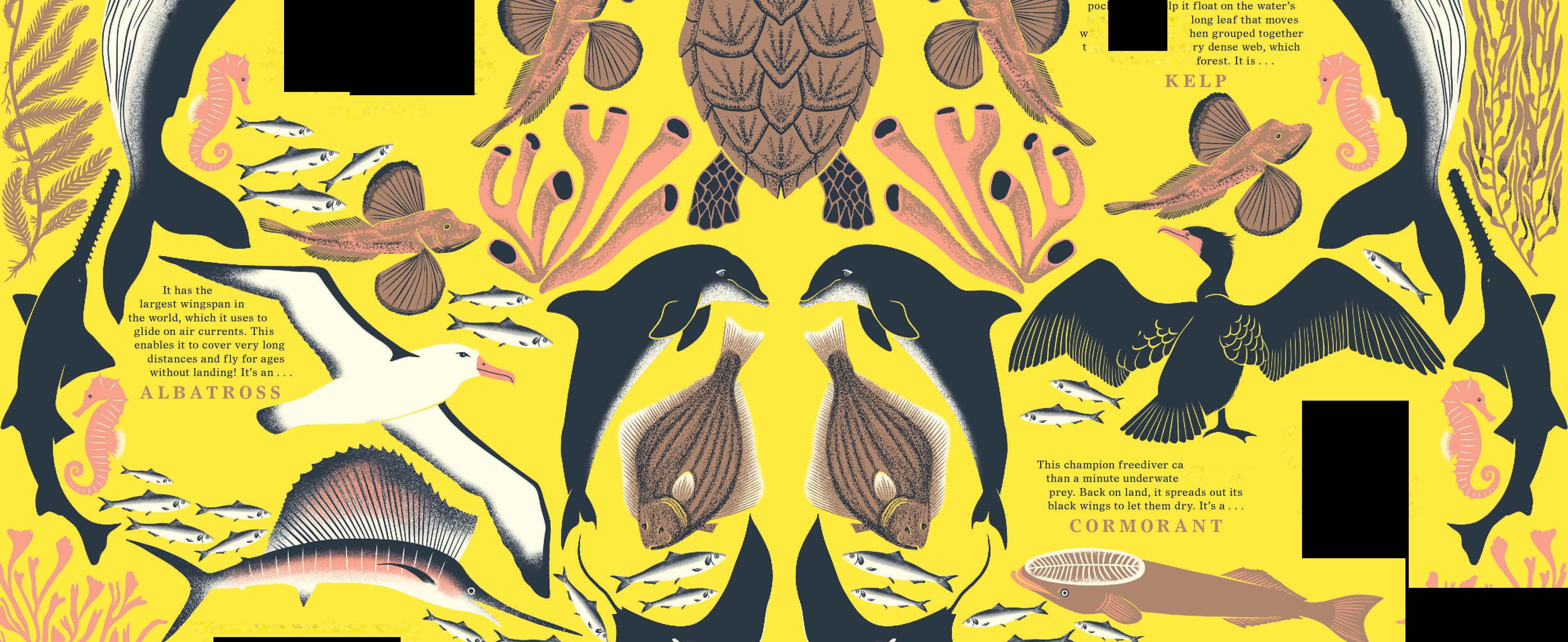
With asail-shaped dorsal fin that stretches almost the entire length of its body, this incredibly fast fish canswim up to 68 miles per hour -making it the fastest in the ocean! It has dots along its sidesand is blue-grey in colour, with some silver. It's the

Very popular with surgeonfish and sea urchins,it belongs to the family of seaweed and comes ina variety of shapes. It's known as the
In some legendsit's a sea monster, and its length, which can reach around nine metres, makes it look like one to the few divers who catch a glimpse of it. The largest of the ray-finned fish, it's known for its ribbon-likeshape. It's the

It livesindeep water where sunlight doesn't reach it. Thefemales of its species, which are much larger than the males,have a lantern on the front of theirheads that they use to attract their prey! It'sa
Its pointed nose and long, tapering tail enable it to rummage around on the seabed in search of food. It is found in temperate to cold waters. Its nameis also linked to a monster in Greek mythology. It's a

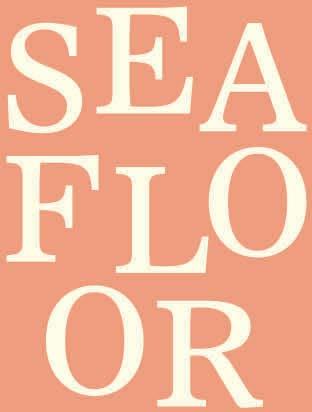
Its body, fins and tail appear tohave shrunk compared toits enormous head. It can openits jaws very wide to swallow large quantities of water, trapping shrimp, squid andplankton. It'sknownas the
A microscopic organism made up of a single cell, it is moved by the tides and can't swim by itself. Baleen whales love it. It can be ofanimal (zoo) or plant (phyto)origin. It's

The upper part of its body is called the mantle andcan reach more than two metres long. But, despite its impressive size and eight arms and two tentacles, it is not the largest of the molluscs. It's the .



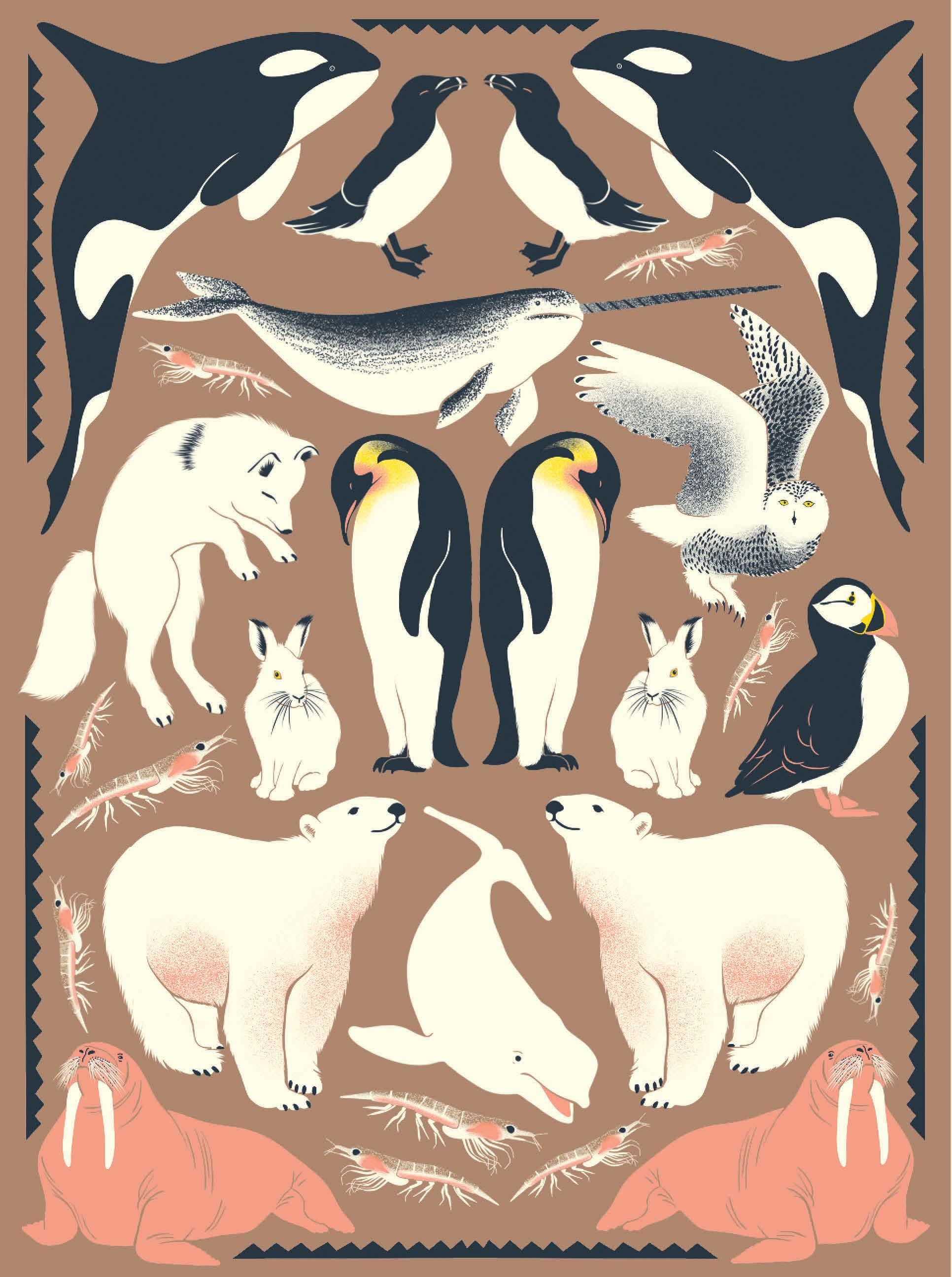
This animal is mostly transparent, but its shell doeshave a reddish colouring. Many have bioluminescent organs making them visible atnight! It's known as
•
It lives in theopensea, returning to shore only to lay eggs and protect its one chick inanest of feathers. Sometimes nicknamed the 'sea parrot' because of its large, colourfulbeak, it's the ATLANTIC PUFFIN
•
This large owl with yellow eyeshas excellent vision during both dayand night. It can spot something moving from over ninety metresaway! It's a
It uses echolocation to findits way through theicefields and maze of icebergs. It's extremely vocal and can copy othersounds. Its name comes from the Russian bielo, meaning white. It's the BELUGA
•
Its unique twisted tusk makes it looklikea mythological creature, but it actually belongs to the family of Arctic aquatic mammals. It can usuallybe foundin herds of around 15 20 animals. It's the
•
This animal is the only canine in the worldto change its fur with the seasons! Brown in summer,it turns white in winter-so allit has to dois curl into a ball, hiding its pawsandmuzzleunderits tail, andit will beimpossibleto see against the snow! It's the ARCTIC FOX








Its yellow-and-black skin warns predators tostayaway-Oecause it's poisonous' If badly InJured, its tallandlegscangrow�' It's a
It's the smallest member of the citrus family and there'sno need to peel it before taking a bite! Like the yuzu, itssour taste makes it theperfectingredientfor a jam.It's a
•
Itsskin issmooth, unlike thedowny peach.It can be round orflat, and its flesh is commonly white oryellow. It'sa
•
Althoughthis flying insect is small, with a wingspan of up to 22 millimetres, it can do a lotof damage to fruit crops. It's called the

This mammal has a long body and neck but shortlegs.Unlike the ermine, itkeeps itsbrown-and-white coatall yearround. It's the
•
Nolonger found in thewild, as an adult, it's a big white moth but as a caterpillar it'sfamousfor theprecious thread it make:s to build its cocoon.It's the SILKWORM
•
This plant-eating insect is oval in shape and has bright red-and-black colouring. During the mating season, itwanders around for days at a time attached by its tail to its chosen mate.It's the






hammering on tree trunks athigh speed-theresonatingsoundtellsit wheretherearelarvaetoeat.Drilling aholeforanestinatreetrunk requiresthousandsofpecks.It'sa •ti � WOODPECKER
Itslittlebrightredballsareso festivethatit'softenpickedin wintertodecoratehomes.But bewareofthedreadedspikes thatdecorateitsleaves! !tis.
Its flowers have fabulous benefits!Peopleusethem tomaketeatotreatsleep problemsorheadaches, butalsoasabasefor many perfumes. It'sthe LI DE TREE -
dhighlydevelopedsensesbecause e long whiskers on the sidesof its muz has a reddish-brown coat, and in medieval Englanditwascalleda Reynard.
lt'sa.

Whenstandingonitshindlegs, it'sovertwometrestall!Thisposition enablesittocatchfish,butifitdoesn't catchmany, it has no problem stealing thepreyfromwolvesthatcrossitspath! Move out of the way, coming through! It'sthe
GR l Z LY BEAR



Itsridgedstemflaresupwardinto aprettycap,whichisoftenyellow or gold. Be careful not to confuseit with theJack o' Lantern, which is poisonous.It'sthegoldenchanterell mushroom,alsoknownasa. ( 0 LE
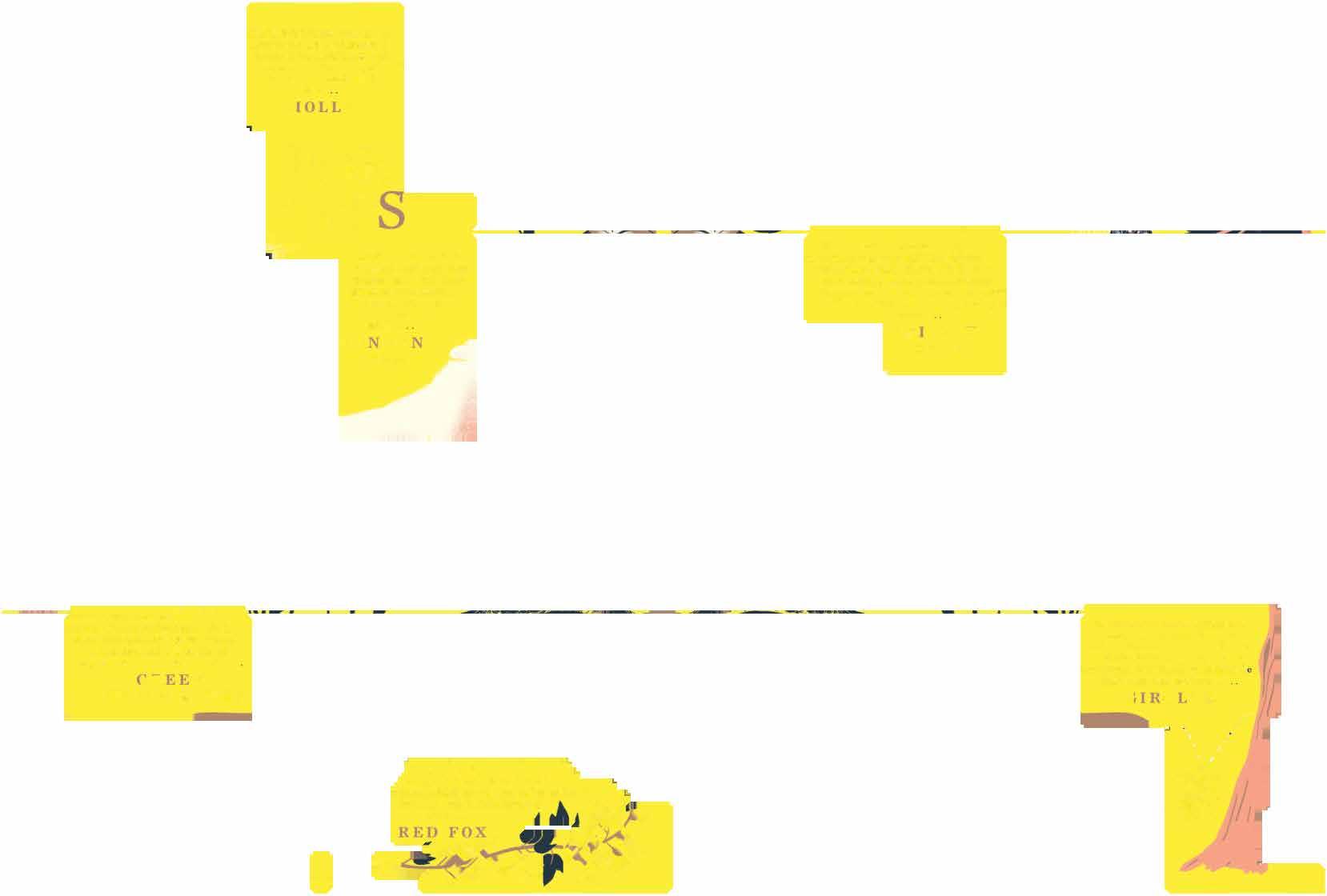

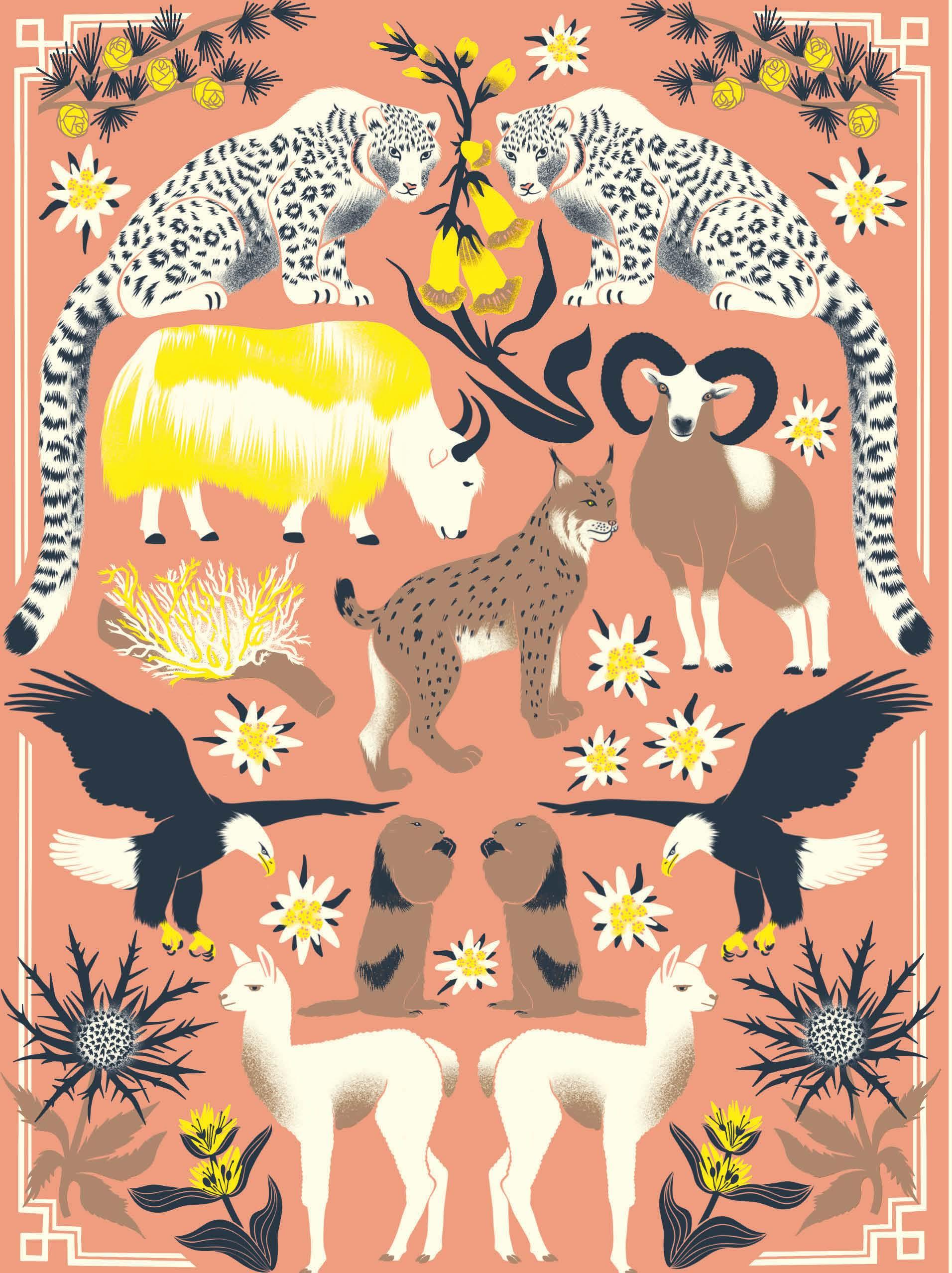
This plant comes in a range of different shapes, becauseit's made up of algae and fungus. Whetherit's 'old man's beard', 'crumpled rag', 'trumpet cup' or 1small flat spots', it has beenaround for millions of years! Itis.
•
Its large, spiral horns distinguish it from the domestic sheep. It uses these horns in spectacular battles, during which the sound of them clashing echoes into valleys. It's a
•
Its wide paws stop it sinking into the snow, but if it does, its long legs help it get out. It always has asmall, dark, pointed tuft at the tip of its ears, and its tail is short, unlike the snow leopard. It's the

This delicate-looking flower only grows inthe wild at high altitudes and blooms at the endof summer. Its pointedpetals gaveit the nickname 'star of the glacier'. It's an
•
Its long stem supports many brightly coloured, bell-shaped flowers thatprovide pollen forbees. Though becareful - it's verypoisonous for humans. It's the
•
It has adapted to the Himalayan climate, with its very long hair that covers awarm layer of short hair, enabling it to withstand the icy winds of mountain blizzards as lowas-40° C. It's a
Jungles are incredibly biodiverse, with ahigh variety and number of species. The vegetation is rich due to heavy rainfall throughout the year. From the smallest fernto the world's tallest trees, thefoliageof the jungle creates a permanent shadethatkeeps it cool despite the hot climate.

Family:Alligatoridae Lifespan•:30-40years Size:upto4.5m
Family:Rafflesiaceae Lifespan:5-7days(bloom) Diameter:lm

Savannahs are found atlow altitudes in hot regions. They are mainly made up of grasses ofvarying heights that grow after the rainy season and dry out for the rest of the year. In them, you'llcome across many plant-eating animals living in herds, but also large predators and scavengers
JAGUAR ALOE VERA
Family:Felidae Lifespan:12-15years Size:1.7-2.7m

BLUEMORPHO
Family:Nymphalidae
Lifespan:approx115days Size:12-20cm

ALOCASIA
Family:Araceae Size:upto3m Flowers:summer

BIRDOF PARADISE
Family:Paradisaeidae Lifespan:5-10years Length:about35cm

Family:Fabaceae Size:around8m Flowers:summer
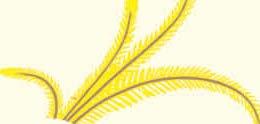
TREEFERN
Family:Cyatheaceae Lifespan:hundredsofyears Size:morethan25m(trunk)
ANACONDA
Family:Boidae
Lifespan:10-20years Size:upto9m

ORANGUTAN
Family:Hominidae Lifespan:35-40years Weight:upto130kgin thewild
YELLOW-BANDED POISONDART FROG
Family:Dendrobatidae Lifespan:5-7years Size:3-5cm

CORDYLINE
Family:Asparagaceae Height:upto10m Flowers:summer

GOLDENLION TAMARIN
Family:Callitrichidae Lifespan:around10years Size:15-25cm(minusitstail)
Family:Asphodelaceae Height:aboutlm F1owers:spring

DRACOCORNUTLS LION
Family:Agamidae Habitat:Borneo Size:about20cm

TOCOTOt:CAN
Family:Ramphastidae Lifespan:20years Size:upto60cm

VENUSFLYTRAP
Family:Droseraceae
Family:Felidae
Lifespan:10-15years Weight:130-190kg

GREENMONKEY BAOBAB
Family:Cercopithecidae Lifespan:10-12years
Size:about49cm

PORCUPINE
Family:Hystricidae/ Erethizontidae
Lifespan:around20years Size:60-90cm

WARTHOG
Family:Suidae
Lifespan:about15years Weight:150kg(male)

ACACIA ANTS
Family:Formicidae
PYTHON
Family:Pythonidae
Family:Bombacaceae
Lifespan:over3,000years
Height:upto40m

ZEBRA
Family:Equidae
Lifespan:25years
Weight:200-450kg
Deserts are arid zones where it rarely rains and where high temperatures makeit almost impossiblefor plants and animals to survive. Therefore, the species found there allhave extraordinary abilities to adaptto dry air, burning hot sand and a lack of shade!

CAMEL
Family:Camelidae
Lifespan:40-50years
Weight:400-650kg(male)

SCORPION
Family:Buthidae
Lifespan:5years Size:6cm(body)

T�RANTULA
Family:Theraphosidae

CACTUS
Family:Cactaceae
Lifespan:over150years
COYOTE
Family:Canidae
Lifespan:6-8years
Size:12-18mSize:around60cm(shoulder)

ORYX
Family:Bovidae
Lifespan:upto20years Speed:37mph

�OSTRICH
Family:Struthionidae Speed:43mph Size:2.1-2.8m

TEDDYBE�R CACTUS
SANDFISH SKINK
Beaches can be made up of pebbles, gravel or fine sand. Generally gently sloping, they are a transition zone between the shore and the seabed. They are home to wind- and salt-resistant plants. The many shellfish and crustaceans that live there are ideal prey for allkinds of seabirds, but also, at low tide, for fishermen!
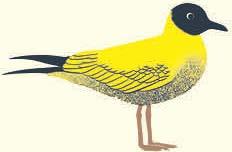

LALGHINGGULL OYSTER
Family:Laridae
Lifespan:around20years Size:38-43cm

SPINYMUREX
Family:Muricidae
Habitat:coastalwaters Size:35-65mm(shell)

TAMARISK
Family:Aviculidae Size:from7.5cm Class:Bivalvia

CLRRYPLANT
Family:Asteraceae Flowers:summer Size:10-50cm

TLMBLEWEED
Family:Tamaricaceae Flowers:spring Height:3-5m
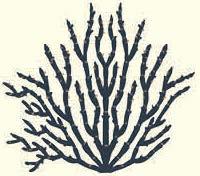
SAMPHIRE
Family:Amaranthaceae Flowers:summer Height:upto30cm

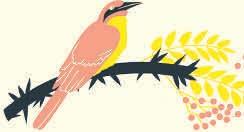
Lifespan:over30years Size:upto10m SOLTHERN
CARMINE
BEE-EATER
Family:Meropidae
Lifespan:upto30years (female)
Size:4-13cm

PAMPAS
GRASS
Family:Poaceae
Family:Cactaceae Flowers:summer Height:1-2m

ROADRUNNER
Family:Scincidae Lifespan:upto10years Size:about20cm

PRICKLYPEAR
CACTUS
Family:Amaranthaceae Size:around1.2m Seedspread:20,000
GHOST CRAB
Family:Ocypodidae
Speed:over7.5mph Size:around10cm
ICE PLANT
Family:Aizoaceae Flowers:latespring Height:upto10cm

JOSHUA TREE
NORTHERN GANNET
HERMIT CRAB
STARFISH
Family:Asteriidae
Lifespan:5-10years
Diameter:10-30cm
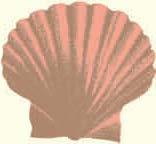
SCALLOP

Lifespan:about20years Flowers:spring BLUE-AND-»
YELLOWMACAW
Family:Psittacidae
Lifespan:upto60years Size:90cm
Habitat:bullhornacacia tree Size:3mm ACACIA
Diet:insectivorous Size:24-27cm

GIRAFFE
Family:Fabaceae
Flowercolour:yellow/white Height:upto21m

SPRINGBOK
Family:Bovidae Speed:54mph Weight:27-48kg
Family:Giraffidae
Lifespan:26years Size:upto6m

MARABOU STORK
Family:Ciconiidae
Lifespan:2025years Size:150cm
Flowers:latesummer Height:upto3m
�•WEAVERBIRD
Family:Ploceidae
Lifespan:10-15years
Size:10-65cm
Family:Cuculidae Speed:20mph Size:around60cm
Family:Cactaceae Flowers:summer Height:upto12m
Family:Asparagaceae Flowers:spring Height:upto15m
Family:Sulidae Weight:2.4-3.6kg Size:87-lOOcm

STRAWBERRY TREE
Family:Ericaceae
Harvest:autumn Height:5-lOm

Family:Coenobitidae Lifespan:upto30years Size:approx.3.5cm FESCUE
Family:Poaceae Flowers:summer Height:upto2m

BLADDERWRACK
Family:Fucaceae
Lifespan:2-5years Length:15-lOOcm
Family:Pectinidae
Lifespan:upto20years Habitat:intertidalzone

YUCCA
Family:Asparagaceae Flowers:summer Height:approx.3m
MARITIME PINE
Family:Pinaceae Lifespan:about200years Height:20-30m
Lagoons are shallow bodies of water separatedfrom oceans bya coral reef. This solidmass, made upof many species of coral,which can behundreds of kilometres in size, is home toa wide variety offish. In thereef,fish find food and hide from sharks and other marinepredators. Unfortunately, some fishing methods are putting this ecosystem in danger.

MORAYEEL
Family:Muraenidae
Lifespan:10-30 years
Length:approx. 1.Sm

REDCORAL
Family:Coralliidae
Size:upto40cm
Growth rate:1-Bmm per year

SEAANEMONE
Family:Actiniidae
Lifespan:upto 100 years
Diameter:from afew mm-1.Sm!

MOORISH
IDOL
Family:Zanclidae
Lifespan:approx.4 years
Size:upto 23cm

SEAFAN
Family:Gorgoniidae
Genus:invertebrate
Height:60cm

CRAYFISH
Family:Astacidae
Lifespan:1-20 years
Size:about 7.Scm

SEAURCHIN
Family:Echinoidea
Lifespan:upto 200 years
Diameter:from 2.Scm

GIANTCLAM
Family:Cardiidae Lifespan:over 100 years
Weight:upto 250kg

COMMON STINGRAY

Family:Ophiotrichidae Lifespan:4-5 years Size:upto 61cm(arms)

BRAIN
Most ofour planet iscovered by oceans, which are separated fromone another by continents. They are home to more than half of the world's living species: from microorganisms, like phytoplankton,to the world's largest animal, the blue whale. There are still many amazing underwater discoveries in store for scientists!

Family:Ostraciidae Lifespan:upto 8 years Size:upto4Scm

NAUTILUS
Family:Nautilidae Lifespan:15-20 years Size:20cm

LIONFISH
Family:Scorpaenidae Lifespan:upto 15 years Size:upto4Scm

SURGEONFISH
Family:Acanthuridae Lifespan:over 30 years Size:upto 50cm

TRUMPETFISH
Family:Aulostomidae
Habitat:coral reef
Size:upto80cm
The seafloor,commonly known as theabyssal zone, isthe deepest partof the ocean,startingfrom 3,000metresbelow the water's surface. Totaldarkness, cold and pressure make exploration difficult, and it waslong thought that very few species lived there! In fact,the biodiversity is immense, and the speciesthat live there haveextraordinaryabilities. It is even thought that thefirstforms of life on Earth appeared in abyssal zones!

GIANTOARFISH
Family:Regalecidae
Depth:upto 1,000m
Size:about9m

NUDIBRANCH

CHIMAERA
Family:Chimaeridae
Depth:2,SOOm or more
Size:60-200cm
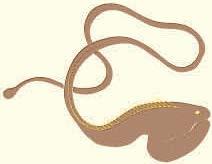
PELICANEEL

CRINOID
Phylum:Echinoderms
Depth:upto 9000m
Known as:sealily

PLANKTON
There are two major ice sheets: in the Arctic and in Antarctica. These are gigantic blocks of saltwater ice, unlike glaciers or polar ice caps, which are made of frozen freshwater and are on land. There arefew living things on icefields, but some species, such as polar bears, are completely dependent on them. That's why global warming, which is causing these icefields to melt, is threatening their survival.

POLARBEAR
Family:Ursidae
Lifespan:25-30 years
Weight:3S0-650kg(male)

KRILL

BELUGAWHALE
Family:Monodontidae
Lifespan:35-50 years
Weight:700-1600kg(male)
ORCA
Family:Delphinidae
Size:morethan 10m
Speed:upto 35mph

WALRUS
NARWHAL
Family:Syngnathidae Lifespan:2-4 years Size:l.5-36cm
Family:Mobulidae family Lifespan:SO years Size:upto7m
Family:Laminariaceae Size:upto 6Sm Growth:46cm per day

CAULERPA
Family:Caulerpaceae Spread:between1-3Sm Height:upto 80cm (fronds)
GURNARD
Family:Triglidae Size:upto 70cm Known as:searobin

BLACKTIP REEFSHARK
Family:Carcharhinidae Lifespan:10-12 years Size:l.5-2m
CORMORANT
Family:Phalacrocoracidae Lifespan:11 years Size:80-lOOcm

GREENSEA TURTLE
Family:Cheloniidae Size:approx. lm Weight: 110-190kg
SAWFISH
Family:Pristidae Lifespan:upto 30 years Size:7m or more1

SAILFISH
Family:Istiophoridae
Lifespan: approx.4 years
Size:1.7-3.5m
HALIBUT
Family:Pleuronectidae
Size:upto4.7m
Weight:approx. 300kg

CORAL
Family:Mussidae Growth:a few mm per year Size:upto 1.8m
POSIDONIA
Family:Posidoniaceae F1ow ers:autumn Lifespan:hundreds of years
YELLOW TUBESPONGE
Family:Aplysinidae
Habitat:coral reef Size:uptolm
HuMPBACK WHALE
Family:Balaenopteridae
Lifespan:80-90years
Weight:upto40tons
RED ALGAE
Family:Palmariaceae
Depth:upto 20m
Size:uptoSOcm
Phylum:Mollusca
Lifespan:upto 1 year
Size:0.6-30cm

ATOLLA
JELLYFISH
Family:Atollidae
Depth:600-SOOOm Size:20-25cm

DEEP-SEA
ANGLERFISH
Family:Ceratioidea
Size:upto l.2m
Weight:upto49.8kg
Family:Eurpharyngidae
Depth:approx. 2,700m
Appearance:transparent
Depth:approx.4,000m
Size:around75cm Size:usually lessthan 0.05mm

MUSHROOM CORAL
Family:Fungiidae
Habitat:lndo-Pacific Size:upto 60cm
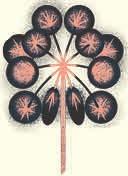
PING-PONG
TREESPONGE
Family:Cladorhizidae
Depth:3000-3500m
Diet:carnivore
DUMBO OCTOPUS
Family:Opisthoteuthidae
Depth:1000-?000m Size:20-30cm

GOSSAMER WORM
Family:Tomopteridae
Depth:upto 3700m Size:upto 60cm
Family:Euphausiidae
Lifespan:upto 10 years Size:4-7cm

ARCTIC HARE
Family:Leporidae Lifespan:3-5 years Size:43-?0cm

ARCTIC FOX
Family:Canidae Lifespan:3-4 years Size:S0-60cm (excludingtail)
Family:Odobenidae
Lifespan:upto40 years
Weight:1500kg

EMPEROR PENGUIN
Family:Spheniscidae
Lifespan:20 years
Size:1.1-1.3m

SNOWY OWL
Family:Strigidae Lifespan:10 years Wingspan:1.2-l.5m
Family:Monodontidae
Lifespan:upto SO years
Weight:approx. 1600kg (male)

LITTLE
PENGUIN
Family:Spheniscidae
Lifespan:approx. 7 years
Size:40-4Scm

ATLANTIC PUFFIN
Family:Alcidae
Size:26-29cm
Weight:320-480g
GIANT ISOPOD
Genus:Bathynomus
Depth:approx. SOOm
Appearance:14legs

Ponds are natural water reservoirs and are generally shallow. The plants that live in ponds are able to survive complete immersion in water. Ponds are home to numerous fish, amphibians and insects, and are an ideal feeding ground for alarge number of fish-eating birds!

ARUMLILY
Family:Araceae Flowers:spring Height:uptolm

KOiCARP
Family:Cyprinidae Lifespan:25-35years Size:max90cm

Towns are unwelcomingecosystems. Tarmac, pollution, street lighting and noise make it difficult for wild species to adapt to this man-made environment. The few animals that live there mainlydepend on the town's human inhabitants for food, but they havefewer predators, which encourages their survival.

EGRET
Family:Ardeidae Wingspan:88-95cm Size:55-65cm

WATERLILY
Family:Nymphaeaceae Flowers:latespring Height:upto2.4mwide

FROG
Class:Batrachia Lifespan:5-10years Size:8-13cm

KINGFISHER
Family:Alcedinidae Lifespan:upto15years Size:10-42cm

CATFISH
Order:Siluriformes Weight:upto300kg! Size:4cm-4.Sm

WATER VIOLET
Family:Primulaceae Flowers:summer Height:upto80cm
MOSQUITO
Family:Culicidae Lifespan:2wks-6mths Size:0.3-1.9cm

YELLOWFLAG IRIS
Family:lridaceae Flowers:summer Height:upto1.Sm

M�LLARD
Family:Anatidae Lifespan:5-10years Size:S0-66cm
DRAGONFLY
Order:Odonates Lifespan:upto7years Wingspan:upto19cm

ROACH
Family:Cyprinidae Lifespan:8-14years Size:1S-40cm

FLY
Order:Diptera Lifespan:around21days Size:fromlmm


BLLRUSH
RAT
Family:Muridae Lifespan:2years Weight:140-500g

CROW
Family:Corvidae Lifespan:7-8years Size:upto0.5m
PIGEON
Family:Columbidae Lifespan:6years Speed:upto90mph

DOG
Family:Canidae Lifespan:averageupto 15years Size:approx.13-96cm
PLANETREE
Family:Platanaceae
Lifespan:uptohundreds ofyears
Height:canbemorethanS0m

DANDELION
Genus:Asteraceae Flowers:summer Height:upto3Scm

DAISY
Family:Asteraceae Flowers:spring Height:upto91cm
�COMMON
WORMWOOD
Family:Asteraceae Flowers:latesummer Height:uptolm

GINKGO
BILOBA
Family:Ginkgoaceae
Lifespan:over1,000years Height:20-35m
Vegetable gardens provide food. All year round, we grow the plants that are in season, mainly vegetables, but also a few fruits and herbs! A well-known garden was created at thePalace of Versailles for the French king, Louis XIV, and is called 'The King's Kitchen Garden'!
Family:Lamiaceae Flowers:summer Height:uptolm

ARTICHOKE
Family:Asteraceae
Harvest:summer
Height:upto1.Sm tall(plant)
SALAMANDER
Family:Salamandridae Lifespan:over20years Size:10-lScm
Orchards are environments created by humans for growing fruit trees. Fruits and nuts such as apples, plums, almonds, cherries, peaches, hazelnuts and persimmons are harvested in temperate zones, while oranges, lychees, dates and bananas are harvested in tropical or sub-Saharan zones. This biotope is home to insects that pollinate the flowers, which of course attract insect-eating birds

Family:Rosaceae Flowers:spring Harvest:autumn

WARBLER
Family:Sylviidae
Diet:invertebrates
Size:9-26cm
SILKWORM
Family:Bombycidae
Diet:foliage Size:7Smm

COURGETTE
Family:Cucurbitaceae
Harvest:summer Size:approx.20cm
SLUG
Class:Gastropoda
Lifespan:1year Size:upto14cm

ROSE
CHAFER
Family:Scarabaeidae Lifecycle:2years Size:about20mm
MELON
Family:Cucurbitaceae
Harvest:summer
Weight:between1-4kg

LEEK
POTATO
Family:Solanaceae
Harvest:summer
Height:upto100cm(plant)
Family:Amaryllidaceae
Harvest:summer Size:approx.30cm
FIREBLG
Family:Pyrrhocoridae
Lifespan:upto2years
Size:6.5-12mm

CODLINGMOTH
Family:Totricidae
Lifespan:13-18days(adult) Wingspan:22mm
SNAIL
Lifespan:uptoSOyears!
Diet:plantmatter
Size:upto20cm
TFIG
Family:Moraceae
Lifespan:around200years Height:upto12m(plant)
KUMQUAT
Family:Rutaceae
Flowers:summer
Height:upto3.6m(plant)
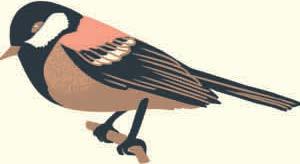
GREATTIT
Size:14cm
Wingspan:24cm
Weight:18g

CAT

Family:Typhaceae Flowers:summer Size:upto2m EEL
Family:Anguillidae Lifespan:5-20years Size:upto3.5m
Family:PasseridaeFamily:Ps1ttac1dae Lifespan:3yearsLifespan:5-8years Height:14-lScmSize:18cm
Family:Felidae Lifespan:upto20years Weight:approx.2.5-4.Skg
STRAWBERRY
Family:Rosaceae Flowers:spring Harvest:summer

LADYBIRD
Family:Coccinellidae
Lifespan:around1year Size:upto1cm
EARTHWORM
Family:Lumbricidae Lifespan:4-8years Length:upto35cm
RADISH
Family:Brassicaceae Harvest:throughouttheyear Size:fromafewmm
WEASEL
Family:Mustelidae
Lifespan:2years Size:20-27cm

Family:Solanaceae Flowers:summer Harvest:latesummer

TURNIP
Family:Brassicaceae Harvest:summer Height:upto20cm(plant)
CAULIFLOWER
Family:Brassicaceae Harvest:throughouttheyear Height:approx.0.5m(plant)
Family:Fabaceae
Harvest:summer Height:from45cm(plant)
POMEGRANATE
Family:Lythraceae
Harvest:autumn
Height:upto7m(plant)
NECTARINE
Family:Rosaceae
Harvest:summer
Height:upto6.Sm(plant)
Family:Rosaceae
Harvest:summer
Height:upto10m(plant)
These fields are used to grow crops or rear livestock. From theair, you can clearly see the boundaries of each plot of land formed byhedges, banks or paths. Hedgerows are essentialfor the balanceof this environment. They provide corridors of vegetation between farmland and surrounding forests, enabling wild animalsto roam betweenthem.

DONKEY
Family:Equidae Lifespan:upto40years
Size:1-1.2m(toshoulders)
WILDCHERRYOAK
Family:Rosaceae Lifespan:around 60 years Height:up to30m
Family:Fagaceae Lifespan:over1000 years Height:20-40m


HONEYBEE HARE MISTLETOE
Family:Apidae
Family:Leporidae Family:Viscaceae Lifespan:upto5 years Lifespan:up to 12 years Flowers:spring

COW POPPY SWALLOW
Family:Bovidae Lifespan:up to 20 years
Weight:450-1,B00kg
Rivers are watercourses - the sourceof which is generally at high altitude -and which flow from upstream to downstream until they plunge into ariver. It is not uncommon to see fish swimming upstream, lookingfor the fresh, cool spring, or algae rippling along the banks.

TROLT
Family:Salmonidae Lifespan:up to20 years Size:around 40-80cm

CYCLAMEN
Family:Primulaceae Flowers:autumn Height:5-30cm

PLATYPUS
Family:Ornithorhynchidae Lifespan:upto 20years Size:38-60cm

PAPYRUS
Family:Cyperaceae
Known as:paper reed Height:up to 4.8m

Family:Papaveraceae Flowers:summer Height:20cm-lm
Family:Hirundinidae Lifespan:2 years Size:17-19cm

STAGBEETLE
Family:Lucanidae
Size:up to 7.5cm Lifespan:approx.5months

BLACKBERRY
Family:Rosaceae
Size:5cm(fruit) Flowers:latespring

SWEET
CHESTNUT
Family:Fagaceae
ASPVIPER
Family:Viperidae Lifespan:15-20years Size:50cm
Family:Characidae Lifespan:up to10 years Size:up to60cm
SWAN
Family:Anatidae
Lifespan:12 years Size:uptol.8m
Forests are large areas mainly covered with big trees, evergreen and deciduous shrubs. This ecosystem provides many habitats,from under the ground to the tree canopy, and there is plenty of food. In the shade of the plants, hoofedanimals,birds of prey,rodents, invertebrates and insects live together in perfect harmony, as long as no human comes along to disturb this balance.
Mountains are formed by the movement of tectonic plates which, over millions of years, have created peaks at the edges of continents. The highest summit in the world is Mount Everest (8,848m). At this altitude, temperatures are low, winds are strong and oxygen is scarce, which is why the flora and fauna are hardy and have adapted to the snowfall and rocky ground!
BEAVER
Family:Castoridae Lifespan:7-8 years Size:up to80cm(body)
WATER
STRIDER MINT
Family:Gerridae Family:Lamiaceae
Known as:pond skater Height:uptolm Size:from5mm Flowers:summer

HEDGEHOG
Family:Erinaceidae Lifespan:2-3 years Size:15-30cm

MEADOW FESCUE
Family:Poaceae
Height:50-130cm Flowers:late spring

PHEASANT
Family:Phasianidae
Lifespan:upto1000 years Size:up to 35m
Lifespan:1-2 years Size:70-88cm
ALFALFA
Family:Fabaceae
Known as:lucerne Height:30-90cm
BUTTERCLP
Family:Ranunculaceae Flowers:summer Height:uptolm
-FIELDMAPLE
Family:Sapindaceae Flowers:spring Height:up to 20mm

SCULPIN
Family:Cottidae Lifespan:4-6 years
WEEPING WILLOW
Family:Salicaceae Lifespan:40-70 years Height:15m

ZANDER
Family:Percidae
Lifespan:up to 20 years
Size:50-66cm
SIAMESE FIGHTINGFISH
Family:Osphronemidae Lifespan:2-5 years
Size:approx.6.5cm

HAZELNt:T
Family:Betulaceae
Lifespan:upto80years
Height:3-36m
Size:approx. 10cmbutcanreach100cm

Family:Aquifoliaceae
Flowers:spring
Height:upto15m

GRIZZLYBEAR
LARCH
Family:Crupressaceae
Lifespan:over3000years
Height:approx. 50-95m

EURASIANLYNX

ALPINE SEAHOLLY
Family:Ursidae
Lifespan:25 years
Weight:up to720kg

WOLF
Family:Canidae
Lifespan:up to 13 years
Size:around2m(grey)
LINDENTREE
Family:Malvaceae
Lifespan:over1000years
Height:20-40m

BADGER
Family:Mustelidae
Lifespan:5-8 years
Weight:8-12kg
REDFOX
Family:Canidae
Lifespan:up to 9 years
Weight:5-8kg
EAGLEOWL
Family:Strigidae
Lifespan:15-20 years
Size:70cm
Family:Pinaceae
Lifespan:250 years
Height:upto 30m
Family:Felidae
Lifespan:17 years
Weight:18-36kg
Family:Apiaceae
Flowers:summer
Height:up to90cm

Family:Bovidae
Lifespan:25 years
Weight:220-580kg

LEBANONCEDAR
Family:Pinaceae
Lifespan:150-300years Height:upto35m

WILDBOAR
Family:Suidae
Lifespan:10 years
Weight:60-lO0kg

G!ROLLE
Family:Cantharellaceae Season:late summer
Height:5-lOcm

LONG-HORNED BEETLE
Family:Cerambycidae
Lifecycle:1-2years
Size:17-40mm
IVY
Family:Araliaceae F1owers:autumn Height:up to30m

GREEN
WOODPECKER
Family:Picidae
Lifespan:approx. 10 years
Size:21-23cm
REDSQLIRREL
Family:Sciuridae
Lifespan:approx. 3years Size:18-20cm
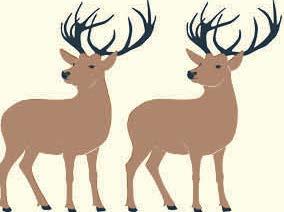
DEER
Family:Cervidae
Lifespan:upto18 years
Weight:upto 200kg
YELLOW GENTIAN
Family:Gentianaceae
Flowers:summer
Height:aboutl.5m
Family:Parmeliaceae
Size:from6mm
Species:over 15,000
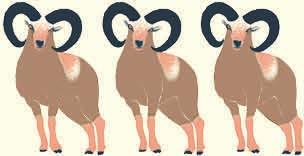
MOUFLON
Family:Bovidae
Lifespan:8-12 years
Height:70cm(to shoulder)

MARMOT
Family:Sciuridae
Lifespan:approx. 15 years
BALDEAGLE
Family:Accipitridae
Lifespan:20-30years
Size:30-60cm(body) inthe wild Wingspan:204cm

LLAMA
Family:Camelidae
Lifespan:approx. 15 years
Size:120cm(to shoulder)
EDELWEISS
Family:Asteraceae
Flowers:summer
Height:5-30cm

FOXGLOVE
Family:Plantaginaceae
Flowers:summer
Height:45-150cm
SNOW
PINE
PROCESSIONARY CATERPILLAR
Family:Notodontidae
Lifecycle:upto 2 years
Size:approx.40mm
LEOPARD .I
Family:Felidae -::
" f( "1
Lif�span:15-18years {c- Weight:25-75kg
Thankyou, as always, to Alexandra Bentz for her support. Thank you to my good luck charms, Claire Hartmann and Phi-Anh Nguyen, and to the whole team at Gallimard Jeunesse, especially Anne-Flore Durand for her timely help! Dan, the Albizia tree on page eight is for you


Originally publishedin French asNature byGallimardJeunesse in2021
First published in theUnitedKingdom by HarperCollins Children'sBooks in2025 HarperCollinsChildren'sBooksIs adivision of HarperCollinsPub/ishers Ltd ILondon BridgeStreet,LondonSEl 9GF www.barpercollins.co.uk
HarperCollinsPublishers,Macken House,39/40 Mayor StreetUpper,Dublin1.D01 C9W8,Ireland
13579108642
Text and illustrations eGallimardJeunesse2021
ISBN: 978-0-00-870270-0
The author andillustratorassertsthemoral right 10 beidentified as the author andillustratorofthe work.
A CIP cataloguerecordforthistitleisavailablefrom theBritishLibrary.All rights reserved.This book is sold subject tothe condition thatitshall not, by wayoftrade or otherwise, be lent, re-sold, hired out or otherwise circulatedwithout thepublisher'sprior consent in anyform, bindingor cover otherthan that in whichit ispublished and without asimilar condition including this conditionbeing imposedon thesubsequent purchaser.No part ofthis publication may bereproduced,storedin aretrieval systemor transmit1edin anyform or by any means, electronic, mechanical, photocopying, recording orotherwise,withoutthe priorpermissionofHarperCollinsPublishersLtd.
Printed and bound inMalaysia

Thisbookisproducedfromindependentlycertified FSCNpaper toensureresponsiblemanagement.
Formoreinfonnationvisit:www.harpercollins.co.uk/green








harpercollins.co.uk


